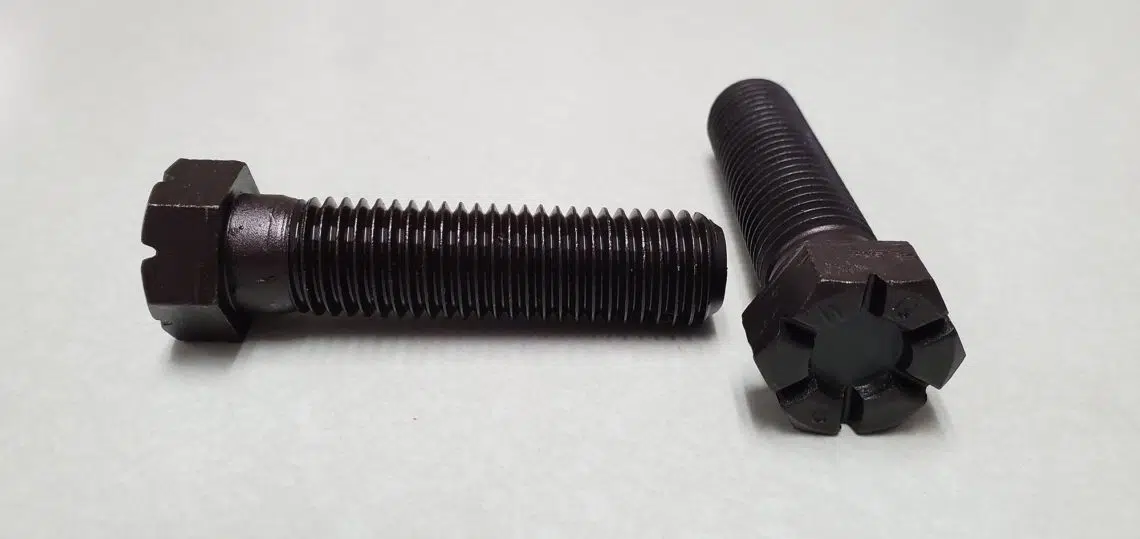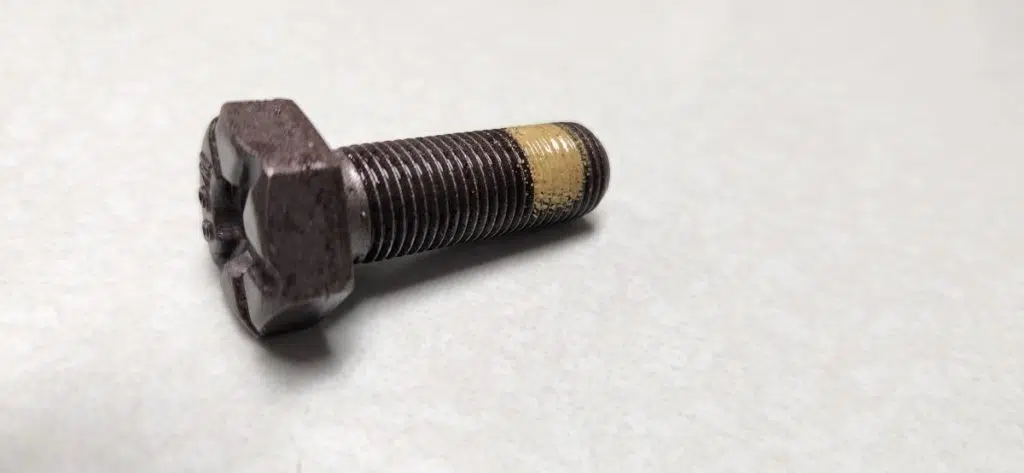If you’ve been researching different fastener options for your application, you may have come across one called a self-locking bolt. This is different from a traditional bolt, and can be particularly useful in certain situations. It might just be the perfect solution for you.
We’ll discuss a little about what a self-locking bolt is, how it works, and what it’s commonly used for below.
What Is a Self-Locking Bolt?
A self-locking bolt is a bolt that has a locking mechanism designed to keep the bolt tight without needing a separate lock nut or lock washer. Its specialized design helps to prevent the possibility of unintentional loosening, even in high-vibration applications.
Examples of Self-Locking Bolts
Think of “self-locking bolt” as a broad category of fastener, as there are a few specific types of bolts that fall within that category. While they’re all designed with a similar intention, there are a few differences between them in terms of features and performance.
Some examples of self-locking bolts include:
- Place bolts — Place bolts have special slotted hex heads that are responsible for their self-locking action. They’re known to produce up to seven times more vibration resistance than traditional hex head cap screws, making them one of the best self-locking bolt options on the market. There are three types of Place bolts:
- AA Place bolt — The original Place bolt design invented by Charles Place in the 1950s. It features a symmetrical six-slot head with an undercut.
- B Place bolt — Wilson-Garner’s improved Place bolt design. It features a five-slot asymmetrical head with an undercut.
- BH Place bolt — Wilson-Garner’s further improved Place bolt design. It also features a five-slot asymmetrical head with an undercut, but the head is oversized to provide an even better locking effect.
- Locking patches — Locking patches are compressed-engineered polymer patches that are bonded permanently to a fastener’s threads. They’re typically made of nylon, but have been known to be produced with other materials as well. Just like there are different types of Place bolts, there are different types of locking patches. While they’re each applied and function differently, they work to accomplish the same goal: that locking action.
For reference on both of the self-locking bolt solutions listed above, check out this photo of a Place bolt with a locking patch:
- Drill a hole in a bolt head and put a wire through — No, we’re not making that up. It’s a rather low-tech option, but it works fine for some applications.
RELATED: Need a specialty bolt, screw, or stud? Wilson-Garner can help.
How Does a Self-Locking Bolt Work?
Self-locking bolts work in various ways, mostly depending on which type of self-locking bolt you’re dealing with. For example, a Place bolt’s unique head design and undercut work together to create a diaphragm-like locking action.
With locking patches, the nylon (or other polymer) compound is dotted or wrapped around a bolt’s threading. In most cases, these patches don’t actually fuse the threads; instead, they kind of push the bolt so it’s off-center in the hole. This makes the bolt and its thread press tightly up against the insertion material and resist loosening.
What Are the Benefits of Using a Self-Locking Bolt?
Depending on your application, a self-locking bolt can offer many benefits over a traditional nut-and-bolt combination. Some of most prominent advantages include:
- Unmatched vibration resistance — Up to seven times higher than traditional hex head cap screws!
- Boosted cost-effectiveness — No need for locking washers means fewer parts to purchase.
- Reduced parts inventory — No need for locking washers also means fewer parts for you to keep track of.
- Simplified assembly — No need for locking washers also means easier, faster insertion and assembly.
Which Applications Frequently Use Self-Locking Bolts?
There are many uses for self-locking bolts, in all kinds of industries. However, their unique benefits can be taken advantage of most in applications and environments where a lot of vibration resistance is needed. Some examples are:
- Cylinder heads
- Flywheels
- Flexplates
- Ring gears
- Mud pumps on oil rigs
- Compressor mountings
- Transmission covers
- Any other application where you don’t want to worry about your joint coming loose over time
Get High-Quality, Self-Locking Place Bolts at Wilson-Garner
Need a self-locking bolt for your application? Trust Wilson-Garner to deliver. Our Place bolts are some of the industry’s top-performing self-locking bolt solutions — manufactured to meet your specifications and ideal for any application where vibration resistance is a priority. Contact our team for more information or request a quote today.


